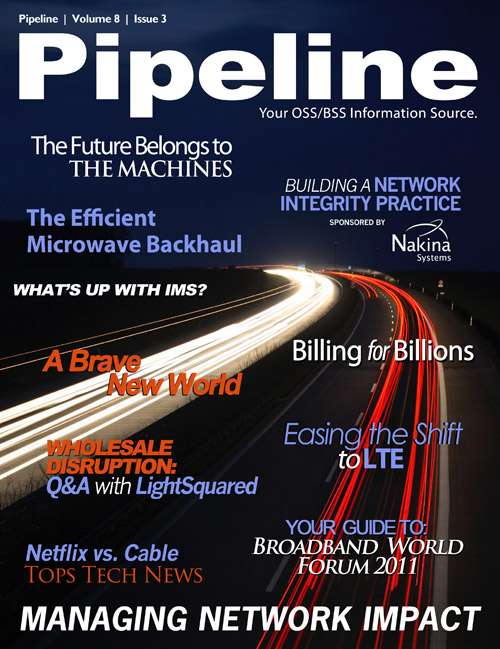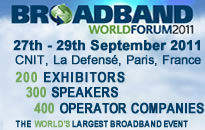In addition, our network is completely open. If our customers want to offer VoIP, P2P, video
streaming…, we still charge them only for the amount of data they used on the network.
netTALK, for example, wanted to replicate in wireless what they are doing in wireline, and we
were the only carrier they found that offered such a wholesale proposition.
Pipeline: It sounds like a compelling business proposition for your customers, but what was
the motivation for creating LightSquared as a company that operates in a purely wholesale
capacity, and are you concerned in any way that there could be a lower earning potential
than a comparable retail carrier might possess?
Boulben: We saw a situation in the United States in which the demand for mobile data was
growing exponentially. In the next 5-7 years, wireless data traffic in the US will increase fifty-
fold. That growth in data traffic is generated by the penetration of smartphones and tablets,
and by the increased usage enabled by 4G (greater speed and reduced latency). What is of
particular concern in the US is that there isn’t enough spectrum to satisfy this exponentially
growing demand. The FCC is talking about a shortage of 500 MHz spectrum. All of the carriers
say that, in the midterm, they don’t have enough spectrum to satisfy such growing demand.
We are going to implement additional capacity with our 59 MHz of spectrum. But why sell
wholesale? First of all, the wholesale market in the US is underdeveloped. When you look
at the wholesale market around the world, you see many more successful MVNOs than in
the US. You see companies like Tesco in the UK or ALDI in Germany, who are very successful
retailers which have become MVNOs. The cable operators in the UK or the Netherlands are
also successful MVNOs. Dell is an MVNO in Japan. So we realized the US wholesale market was
underdeveloped. On the revenue side, prices and levels of profitability are extremely high. If
you combine the two—no wholesale market and a price umbrella—there is real opportunity in
the US wholesale market. There are plenty of players looking to get into the wireless market
who could serve the end user in a much more efficient manner than existing wireless carriers.
If you go to an Apple store, you can get everything: the device, the training, and you can pay
for services using your iTunes account. The only thing you can’t get is connectivity. Device
manufacturers like Apple would like to be able to offer an end-to-end customer experience.
We could enable them to provide that.
So it’s a great opportunity for us in terms of return on investment. Being a retail operator is
much more expensive. You have to establish a brand, build stores, and subsidize devices. You
have to look at your acquisition cost and your churn rates. We don’t have to worry about these
things. If you look at our business model, it’s much more similar to a tower company than to a
traditional wireless carrier.
Pipeline: How large is LightSquared’s network?
Boulben: Well, our network is not deployed yet [laughs]. We are in the early phases of
deployment, but our network will eventually cover 260 million POPs, minimum, by 2015 to
meet our FCC requirements, though we intend to go beyond that. We are crafting our network
so it will have the best quality of service in urban areas, with excellent indoor penetration. We
are building more towers than we need to deliver that. Our network will also integrate satellite coverage. We launched our first satellite last November. That means we’ll be able to offer
coverage in 100% of the US territory, coast to coast. If you’re in the middle of Yellowstone,
and have no access to network coverage, you can switch to satellite mode and make a phone
call or send a text or an e-mail. And you’ll be able to do that with a device that is no different
from a regular cell phone. That’s due to our partnership with Qualcomm, which integrated the
satellite protocol onto its 4G chipset, and also because the satellite we launched has the largest
reflector of any commercial satellite, so you don’t need a special antenna on your device to
communicate with the satellite.





